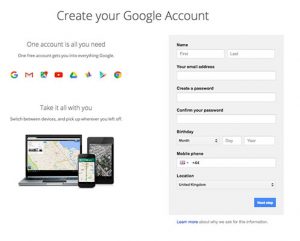We need to think seriously about imagery, messaging and team roles in how we communicate with customers, coworkers and vendors. Here are three ways to start that process.
This column will be tough for me to write because, after 20 years of being in marketing, something happened to me that changed the way I see our industry.
It gave me new insight into situations that women face every day. I’ve heard them talk about it, but I didn’t understand it until it happened to me.
I got mansplained.
Merriam-Webster defines it like this: “When a man talks condescendingly to someone (especially a woman) about something he has incomplete knowledge of, with the mistaken assumption that he knows more about it than the person he’s talking to does.”
Stick with me while I explain what happened and why it made me rethink marketing.
How it happened
I’ve been looking for a service to transcribe calls and online meetings so I can listen more intently to what my clients and co-workers are saying instead of trying to take notes and multitask.
I signed up with one service for a trial. A few days later, I got the expected follow-up email saying, “Thanks for signing up; if you’d like to learn more, I’d love to give you a demo.”
As an entrepreneur and tech-industry investor for years, I’m always open to the opportunity to talk with a company about their business and their tech in this space, what their challenges and struggles are and how they market their services.
So, I scheduled a time. The account exec and I chatted briefly via email about my company and service requirements. So far, so good.
Then, I got the email that shook my world. Here’s what he said:
“I see you’re the co-founder of your org. You also might be looking to test this tool to maybe roll out to others on your team. That’s awesome and you’re obviously one of the top main decision makers, but just to be candid you’re better off delegating the testing/validating aspect to someone else on your team. I’ve been working with CEO’s/Founders of many different orgs for months and 90% of them are too busy and don’t have the bandwidth to incorporate a new piece of tech into their routine yet. [Brand] does need a ramp up time to learn about ones business. [Brand] is not a silver bullet out the gate, therefore please let others do the testing/validating. You’re definitely the right level, but not the right one to do the testing.“ (Emphasis is mine.)
My reaction? “How dare you tell me what my business is and what my skill level should dictate?!”
Now, I have seen some bad sales emails in my time. My inbox is full of them. And I don’t have the patience for people who don’t take the time to communicate well.
So, I fired off a reply: “This is probably the worst email asking for other members to be involved in the process. I could think of a few hundred ways to say ‘hey, do you want to have your tech guys on the call to discuss with them also?’ I will decline the meeting and move on to another technology partner.”
The awakening
After I settled down, I told a friend what happened. The first words out of her mouth?
“You just got mansplained!”
Yes! Yes, I was mansplained. And, suddenly, I understood how insulting and how crass that can be, how frustrating for anyone, especially women who get this all the time.
At that moment, I began to see marketing differently.
Maybe you’re chuckling, too. A man mansplaining another man? Yep, it happened. And what I hope you take away from this incident and my reaction is that you open your eyes to how you communicate with your customers, coworkers, peers, vendors, clients and prospects.
3 ways to overcome bias in marketing
We need to think seriously about imagery, messaging and team roles and responsibilities to change the conversation and not inadvertently offend or belittle the people we work with. Here are three ways to start that process.
1. Review the images you use in your marketing collateral and other materials.
Shortly after this experience, I put together a presentation on a marketing approach for different personas within the dental industry. I had pictures to illustrate job roles such as dentists, hygienists, nurses, receptionists and technology staff.
Then I saw what I had done. I had chosen photos of a male dentist, a female hygienist and a female receptionist. Why did the dentist have to be male and the hygienist female? My own dental office has female dentists. But I subconsciously perpetuated the stereotype.
Look at your sales collateral and marketing emails. Review your personas, copy examples and artwork. See how you communicate to your customers and coworkers with imagery that perpetuates gender stereotypes.
2. Audit the language and content your salespeople use with prospective customers for potentially offensive language and concepts.
Whether you participate in or lead your company’s marketing team, your role is to control how your brand’s voice, message and equity is communicated by your workers.
In B2B, your salespeople and your marketing collateral (presentations, printed slicks, email and web content) are the primary drivers that shape your brand.
In B2C, it happens through your messaging via email, your website, social media, texting and other channels as well as personal interactions in stores and other physical locations.
When was the last time you audited what your salespeople are saying? Have you looked for potential mansplaining in the language you use to describe your product mix? Do you over-explain your value proposition because of gender bias?
How often do you look at what your salespeople say to prospects or your copywriters are writing in white papers, marketing collateral and other customer-facing content?
Speaking of which, here’s a follow-up on my communication with the transcription-company account exec. About 20 minutes after I sent my reply, I got an email that was contrite and apologetic. Did I end up agreeing to a demo after all?
No. Because I suspected he tried to spin this as a funny story to his boss, and the boss said, “You blew it.”
3. Examine the roles and responsibilities of your marketing team.
I have been lucky enough in my career to work with phenomenal women. In the last ten years, more than 75% of my team members have been women. But I also know companies that relegate women to stereotypical jobs. If men lead the group, more often, women are assigned to positions based on gender.
If we’re going to change the corporate landscape, we have to expand opportunities for women. We must look past gender bias in hiring and consideration of women for nontraditional roles.
What are you doing to create equal opportunities? Have you checked yourself, your practices and your communications? Maybe you over-explain in some cases and under-explain in others, such as in training new hires.
This goes beyond mansplaining, which assumes that the man doing the over-explaining is talking to a woman who is either his professional equal or has even more knowledge and experience than him, but it’s still relevant to my point.
A good leader wants the entire team to be as successful as possible and gives everyone the opportunity to do that. It’s not a question of women having to demand equality. The male population must stand up and advocate for it.
In the rapid-fire evolution of our industry, it doesn’t matter whether you’re in print, digital or any other channel. In marketing, we are all moving too fast, whether you’re at the specialist level or the CEO. Sometimes, you need an eye-opening moment, like the one I had with the transcription company, to realize we need to change our perspectives.
Wrapping up
While some might question or contest my experience and say it does not meet the technical definition of mansplaining, don’t discount my point. It’s all a communications problem that attempts to label someone as “not good enough.” This approach, while offensive, is pervasive in our culture and forced me to review how I use marketing and how I interact with others.
My point is this: Are you aligned with breaking gender stereotypes? Or, do you label or discount others because of their gender, role or position? And, ultimately, how does that unconscious bias affect your marketing?
Opinions expressed in this article are those of the guest author and not necessarily Marketing Land. Staff authors are listed here.
Marketing Land – Internet Marketing News, Strategies & Tips
(48)
Report Post







